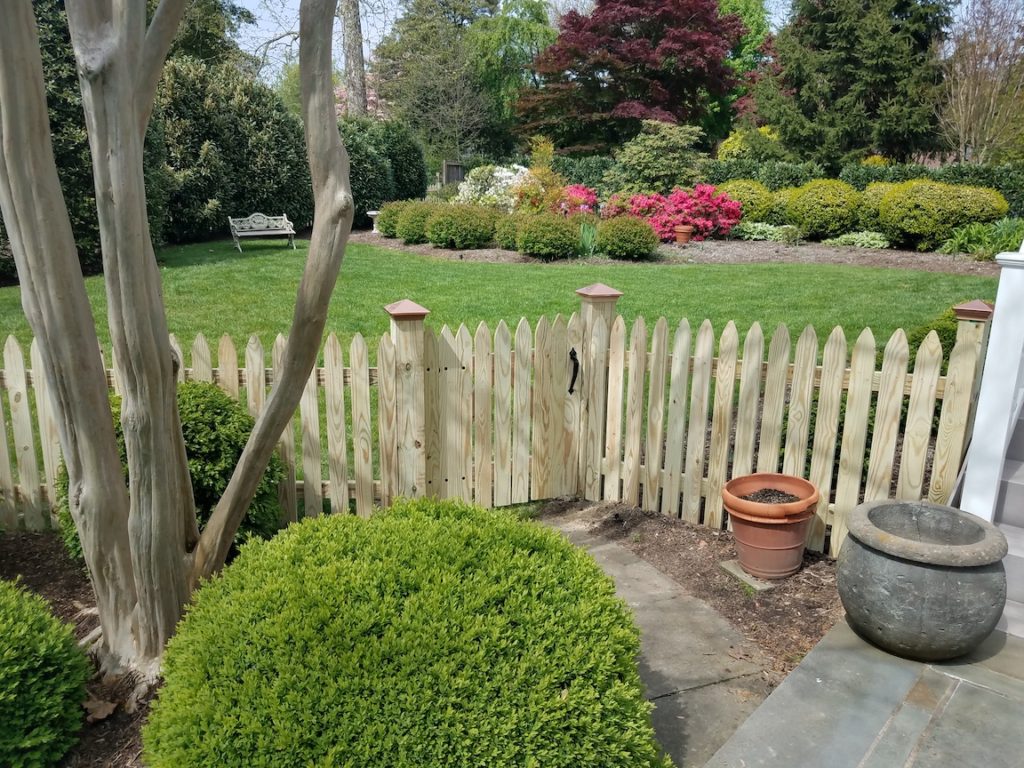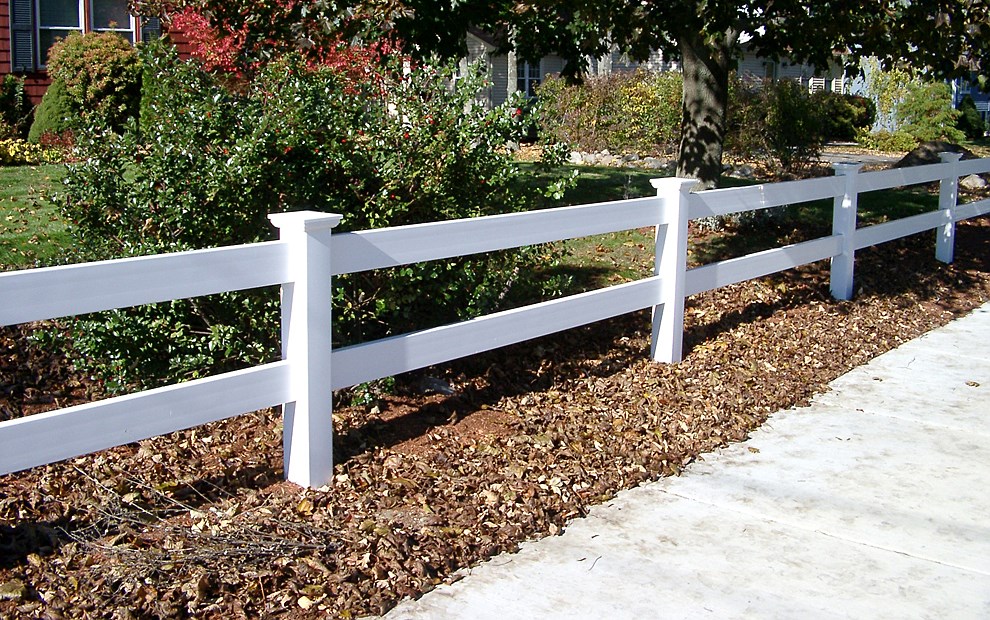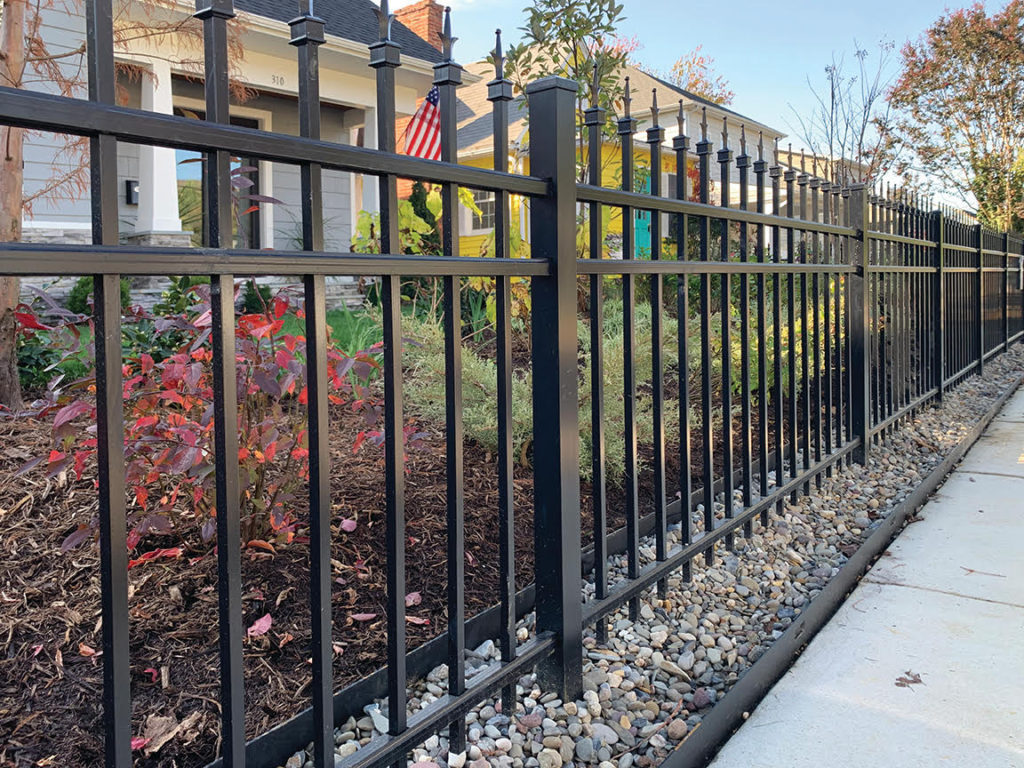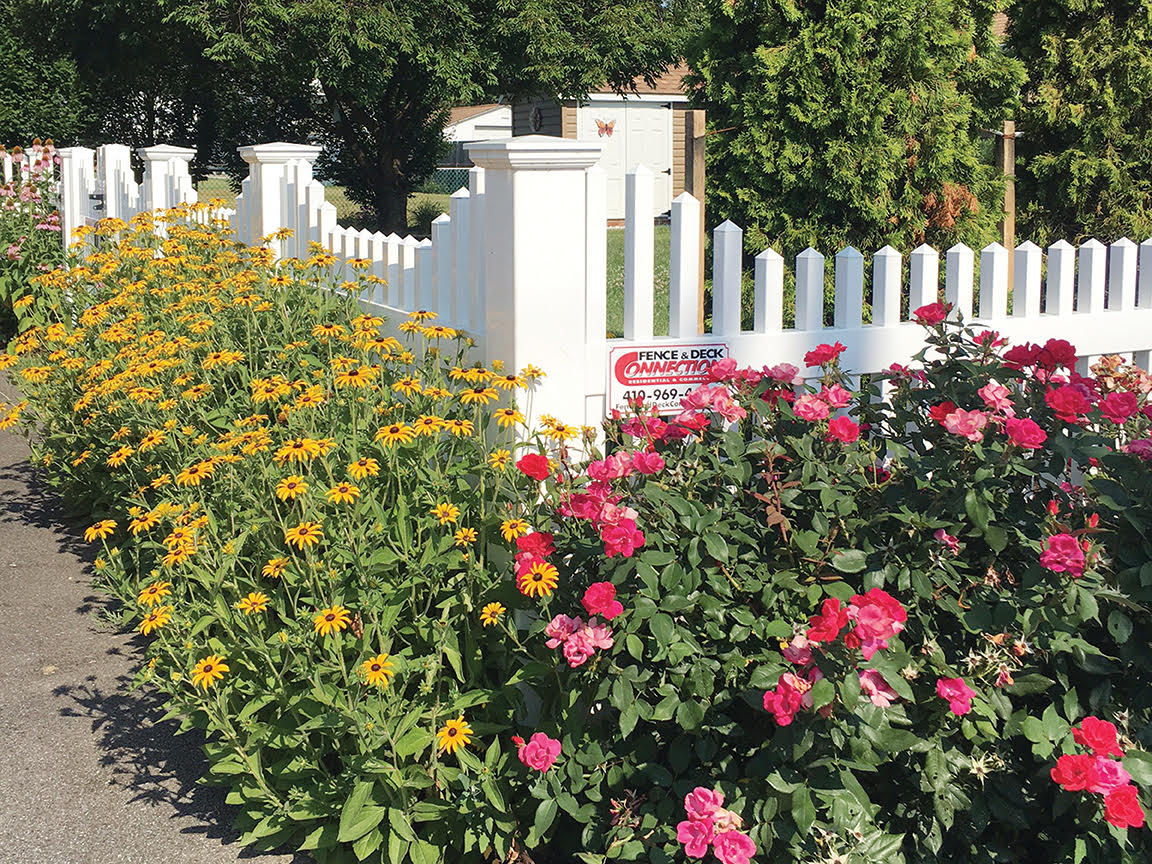After a couple fake-outs over the last couple weeks, it seems that spring is finally here in Maryland! Before you fill up your schedule with backyard barbecues and evening get-togethers, you’ll want to make sure your backyard space is looking its very best. One of the first tasks you can check off your outdoor spring cleaning list is your fence and surrounding area. Whether your yard is adorned with wood, vinyl, or aluminum fencing, regular upkeep and yearly maintenance can go a long way.
First, you’ll want to give your fencing a thorough inspection. The winter season can take its toll on your property, and your fence often takes the brunt of any harsh weather — especially with heavy winds. Spend a few minutes walking the fence line to ensure that the structures of fence posts are sturdy and secure. During extreme temperature fluctuations, ice, snow and the weight of other debris can affect the structural soundness of fence posts. You will also want to pay close attention to the condition of the boards and posts — are they peeling, chipping, rotting, or show signs of mold or mildew? Deteriorating fencing due to insect or moisture damage can definitely cause structural or safety issues.
Once you’re done with a quick inspection, it’s time to really get to work. Unless your fence has been built within the month or so, your fence is probably dirty. Algae, mold, and mildew buildup are caused by moisture and accelerated by a lot of shade. It’s no surprise that winter and early spring can become the perfect breeding ground for these growths. This is the most common type of damaging “gunk” you’ll find on wood and vinyl fencing, in addition to the typical dirt and grime that is simply a cosmetic issue.

Wood Fencing
Wood fences are the hardest to keep clean and in good condition, but a commitment to regular cleaning and maintenance will keep them looking fresh for 15-20 years. When you discover that your fence is moldy, you’ll want to give it a proper cleaning, as untreated mold can lead to rot. Using a bleach solution (1:5 bleach to water ratio) or a white vinegar solution (1:1 vinegar to water ratio), scrub hard with rags soaked in the solution, making sure it penetrates into the wood. This kills any of the mold and algae that has burrowed itself into the wood. After you leave the solution soaking into the entirety of the fencing, you’ll need to wash it off either by hand by scrubbing with clean hot water, or by using a pressure washer. Once the fence is completely dry, repainting the fence is a great way to preserve the wood. Painting or staining should be done every 4-5 years.

Vinyl Fencing
Vinyl fencing is a popular choice for Marylanders because the material is resistant to mold. However, white vinyl can become especially dirty and grimy with weather, wildlife, or your fencing borders a busy road. One of the benefits of vinyl is that it can simply be cleaned with a soapy water or vinegar solution. Be sure to first brush the surface off to remove any loose dirt. As always, pressure washing the fence is the quickest and easiest way to get your fence looking shiny and brand new.

Aluminum Fencing
While aluminum fencing can be more costly, it’s undoubtedly the easiest to keep clean and requires little maintenance. Using a rag or brush, remove any loose dirt and debris. Then, wash it down with soapy water or a mild vinegar solution. While either solution will work just fine, vinegar helps to cut through any tough grime.
After a thorough inspection or cleaning of your yard’s fencing, you might notice that it’s time for an upgrade! For over 30 years, Fence & Deck Connection has designed and installed high-quality fences, decks, and screened porches for families in Anne Arundel County year-round. Contact us at 410-757-5511 or stop by our outdoor showroom at 8057 Veterans Hwy, Millersville, MD 21108 to learn more about our many fence and deck options customizable to your needs!
*This article was also published in the 2022 Severna Park Voice – Home and Garden Edition

